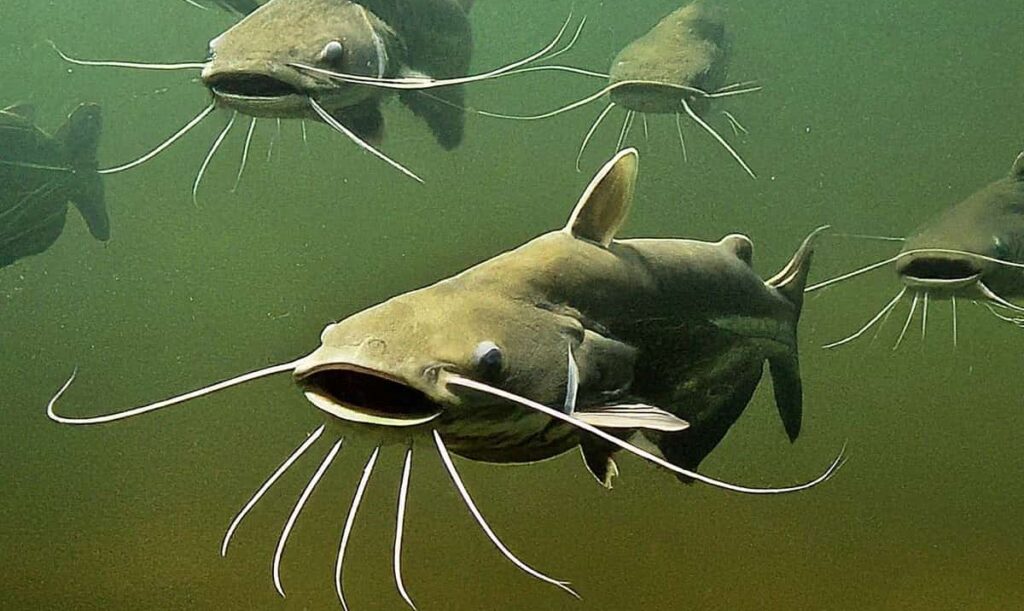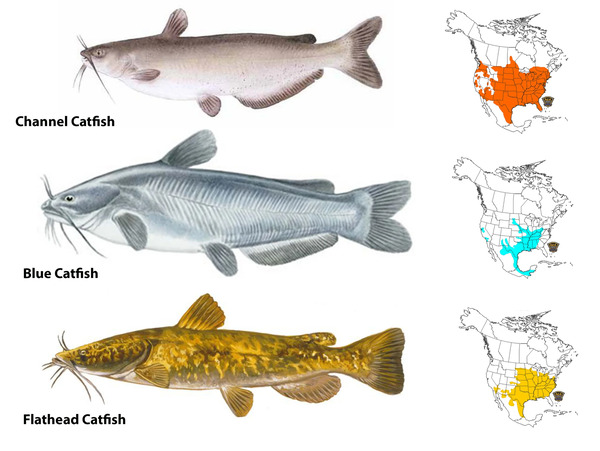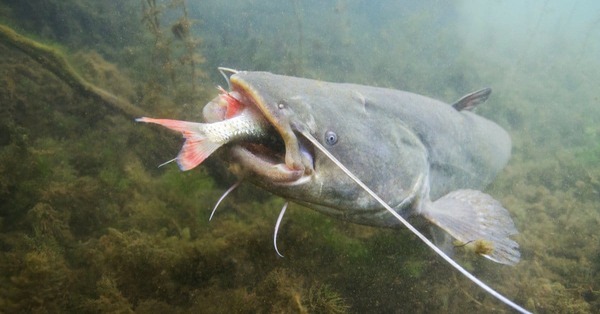Are Catfish Bottom Feeders? Quick Answer
Catfish are stereotypically seen as bottom feeders, which has a negative connotation with it.
But is this true, and how do the different species of catfish differ form one another?
So, are catfish bottom feeders?
Are Catfish Bottom Feeders?
Yes, catfish are bottom feeders, but not all the time.
Catfish spend the majority of their time cruising the bottom of the water and using their whiskers to feel and taste the floor of the lake in search of dead or dying food.
However, there is only so much scavenging that can be done on the bottom of a lake, pond, or river.
Eventually, the dead food will run out and catfish will need to find food elsewhere.
Catfish prefer to feed on the bottom, but they are also well prepared to hunt down prey when they need.
Which Catfish Bottom Feed the Most?
There are a bunch of different catfish species, and each one feeds a bit differently.
1. Blue Catfish
Blue catfish are the biggest bottom feeders and will rarely chase after live prey.
If you have ever seen a blue cat, you can see that they are fairly wide and stocky.
This is not the ideal build for hunting down food. Blue catfish live in bigger bodies of water such as rivers and big lakes, so they pretty much never run out of dead food that falls to the bottom.
2. Bullhead Catfish
Bullheads are the smallest catfish species, which kind of limits the amount of prey that they can hunt and eat.
They do occasionally chase small bluegill, minnows, or crawfish, but bullheads are big time bottom feeders.
However, bullhead do often come to the surface to eat berries, corn, or bread that people throw in for them to eat.
3. Channel Catfish
Channel catfish is where the species starts to get more predatory.
Although channel cats are still primarily bottom feeders, they have a sleeker body shape that allows them to chase down prey much better than other species.
One way that channel cats often hunt is by hovering right below a large school of shad.
Once one or two shad drop down or get chased down by another fish, the channel cat will pounce.
I have accidentally caught a bunch of channel catfish when fishing these shad schools in search of bass.
4. Flathead Catfish
Flatheads are actually more predators than they are scavengers.
With their super wide mouth, they can eat just about any species of fish that share the water with them.
This is why live bait is the most common way to fish for flathead catfish.
Because they hone in of food that is already alive. With that being said, flatheads will still spend most of the time glued to the bottom.
But since they are hunters, it is hard to refer to them as bottom feeders.
What Do Catfish Eat?
Catfish have one of the widest ranging diets of all fish. They aren’t too picky about what they eat, but they do hone in on certain foods.
Bluegill
Bluegill can be found in just about any body of water in America. So if there are catfish in a lake, they will be feeding on bluegill.
Shad
Shad are a favorite forage of all catfish because thousands of them die each year.
Especially during the winter months, tons of shad die off and the catfish gorge themselves.
Crawfish
Crawfish take a bit of an effort to chase down, but they live right on the bottom already, so the catfish don’t have to swim up to hunt them down.
Worms
Anglers have been catching catfish with nightcrawlers for as long as rods and reels have been around. They are a super easy snack and catfish of all species love them.
Just About Anything Else
Catfish are kind of like the raccoons of water. They will eat just about anything. They will eat other animals such as eels, birds, frogs, or mice.
And they will also eat non living food like fruit, bread, corn, marshmallows, or other rather normal human foods.
Can You Catch Catfish On Lures?
Yes and no. Yes, you certainly can catch them on lures because they will often hunt down prey.
Like I said earlier, I have accidentally caught catfish on lures while bass fishing.
But lures are a very inefficient way to target catfish. You could fish for weeks with lures, targeting catfish, and still not catch any.
So while it is possible to catch them on lures, it is not an effective method.
How Do Bottom Feeders Affect the Ecosystem?
Bottom feeders like catfish play important roles in ecosystem health.
They help in nutrient cycling by consuming organic matter from the bottom of water bodies, which can contribute to water quality and clarity.
Additionally, they serve as prey for larger predators, contributing to the balance of aquatic food webs.
Reeling this In
So while catfish are primarily bottom feeders, they will sometimes come off of the bottom (especially when it rains) in order to hunt down prey.
Things like species, time of year, weather, and available forage are all conditions that will dictate how catfish feed.










